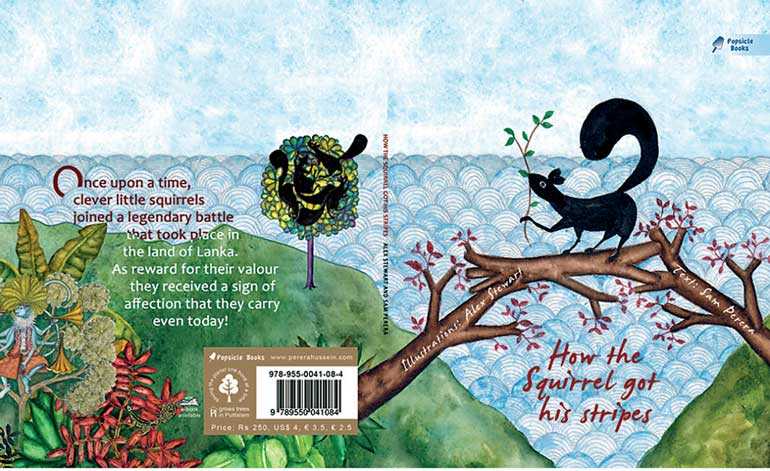Friday Apr 19, 2024
Friday Apr 19, 2024
Saturday, 10 August 2019 00:00 - - {{hitsCtrl.values.hits}}

Why do leopards have spots? Why does an elephant have a trunk? Why do peacocks have such beautiful feathers? I have always been fascinated by tales that describe nature or explain the world in a non-scientific way, and as I often say, fiction credibly bridges gaps that science cannot fill. 
Moving on from childhood, when the so-called real world presses in, one becomes less pre-occupied with these questions and we tend to accept the world as we find it.
Myth and legend on the other hand, being first on the scene of civilisation and thus way ahead of science, was quick to explain all phenomena that was unusual with fantastical tales that never resorted to the boring copout “that’s just the way it is”.
Even fairly primitive societies have a storehouse of such stories that were passed down from generation to generation, that explained the world in general and our place in it in particular. These early stories kept being added to, perfecting their storyline and increasing their credibility.
It is easy to imagine how superhuman characteristics were attributed to divinities and in the case of South-Asian storytelling, how divinities themselves were subject to structured hierarchies. Given similar oral traditions the world over, it is also easy to see how these stories could contain multiple narratives and how you yourself could pass it down in many different ways.
Although my friends and their children listened indulgently when I related stories to them, I realised that a visual back-up would enhance these tales and I cast around for an illustrator. Art is often a hidden discipline where even the work of established artists is not easily accessible to the general public. However, Colombo has a vibrant art scene with not just illustrators but many emerging artists exhibiting their work.
At one such exhibition, I saw artwork by the whimsical English artist Alex Stewart and thought his work would be perfect to illustrate a series of myth and legend that drew specifically on Lankan stories. As with many things that we consider being uniquely ours, many of our most popular legends hark back to the Indian subcontinent, but as always, we add and embellish, making these stories our own.
Alex Stewart was receptive to the idea of being told what to paint and while sitting outside in a garden café, discussing where to begin, he looked at squirrels scurrying around busily, turned to me and said “Sam, how did these squirrels get their stripes?”
That set me off and I told him a story that draws on the Indian saga, the Ramayana, which tells how Rama raised an army of men and beasts to cross the ocean between India and Lanka, and how he battled with Ravana to recover Sita. Among the multitude who helped Rama in his epic battle were these little squirrels… The die was cast.
Besides ‘How the Squirrel got His Stripes,’ I managed to do a mini-series of three books drawing on local myth and legend, using Alex Stewart’s superbly-detailed paintings, pricing them affordably so that not only books but his art would be made accessible to young (and also not-so-young) minds.
The reproduction of the paintings turned out fabulously and I have seen children pore over of the details of each drawing, reluctant to turn the page. The next step of course, is to translate these little books into both Sinhala and Tamil to cover our linguistic groups.
You must pick one up, and as always, harking back to story-telling traditions of old, these books work even better when you read the story first and then pitch it to the level of your entourage.
(Sam Perera is a partner of the Perera-Hussein Publishing House which publishes culturally relevant stories by emerging and established Lankan and regional authors – for a primarily Lankan audience. Ph books are available everywhere books are sold and through www.pererahussein.com.)